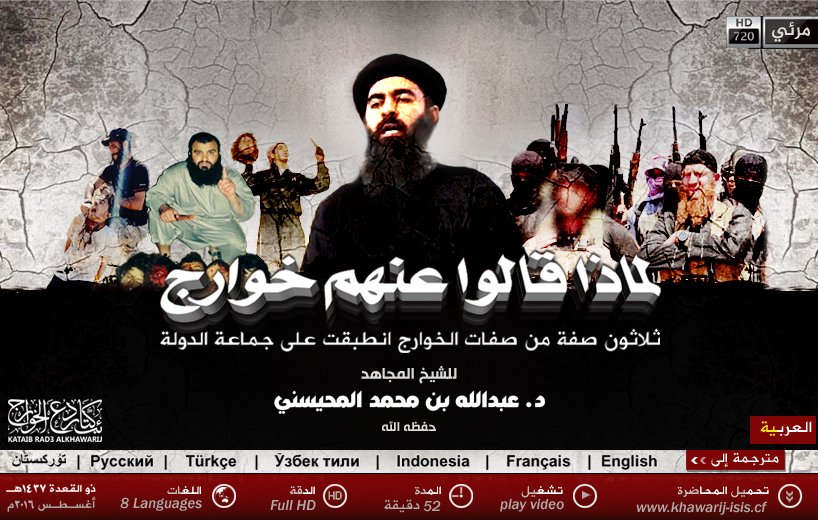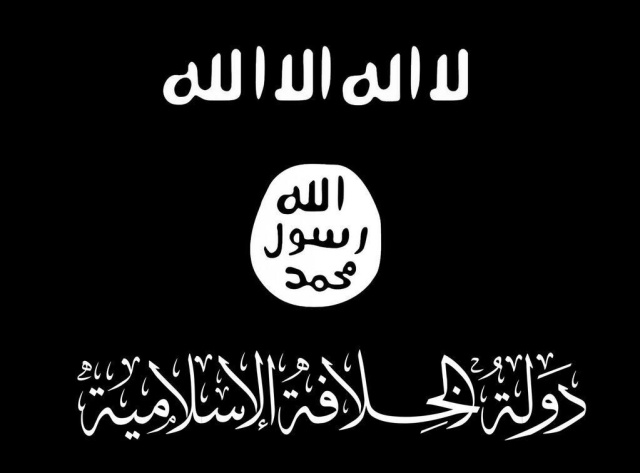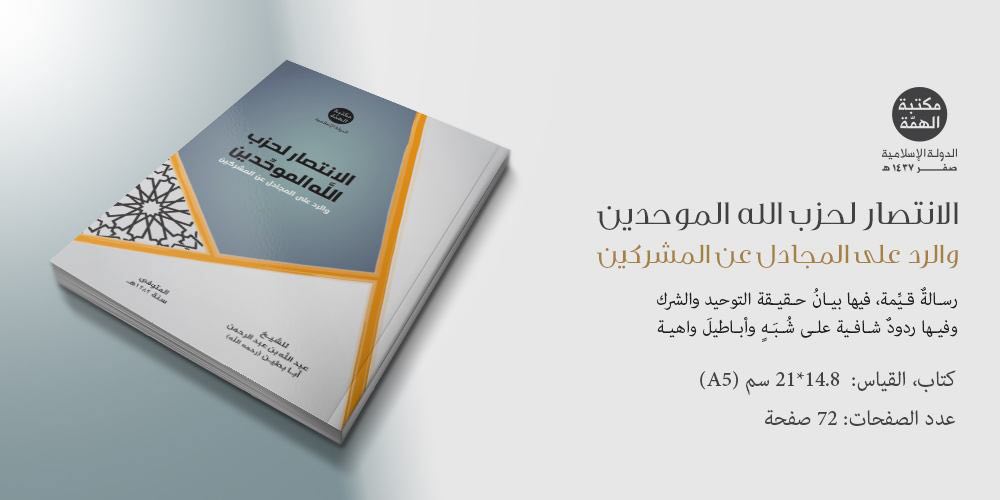
________________
To inquire about a translation for this video message for a fee email: [email protected]
Category: The Islamic State
New release from Abū Qatādah al-Filisṭīnī: "Words on the Stage"
Click the following link for a safe PDF copy: Abū Qatādah al-Filisṭīnī — “Words on the Stage”
__________________
To inquire about a translation for this release for a fee email: [email protected]
New video message from The Islamic State: "[Their] Assembly Will Be Defeated, And They Will Turn Their Backs [In Retreat] – Wilāyat Ṭarābulus"
The title of this release is Qur’anic verse 54:45.
—

__________________
Weekly Eye on ISIS in Libya Update – August 29, 2016
ISIS In Action
In Sirte, fighting halted last week, but resumed fiercely on 27 August. The break in the fighting was reportedly to allow wives and children of ISIS fighters to exit the conflict zone towards the southwest, though there is no evidence confirming this actually took place. It is likely that key ISIS commanders will have taken advantage of this lull in fighting to escape to the south, meaning the destruction of ISIS in Sirte will not mean the eradication of ISIS in Libya.
On 28 August, Bunyan Marsus (BM) fighters aligned with the Government of National Accord (GNA) closed in on ISIS-held districts 1 and 3 of Sirte. At least 35 were killed and more than 180 injured as a result of fierce fighting and reportedly 14 attempted SVBIED attacks by ISIS. BM sources say that five of these were neutralised by US airstrikes, four where destroyed by BM fighters before impact, while five others managed to hit their targets. SVBIED’s, together with IEDs, booby traps and sniper fire, accounts for the majority of BM casualties. It is unclear if BM forces have either the training or the resolve to push past this relentless wave of attacks. In fact, we see that ISIS in Libya deploys different, but related tactics to ISIS in Syria and Iraq.
One way of analysing the mass use of SVBIEDs is that ISIS fighters are making a suicidal last stand against the advance of Misratan-led BM fighters. Another way is they have calculated that this approach may successfully dissuade Misratan fighters from completely liberating Sirte. ISIS areas of control are now limited to two clusters in residential districts 1 and 3, which are not directly contiguous areas, in addition to pockets of resistance in residential district 2.
Meanwhile, unpublicized reports indicate that an ISIS cell of fighters from Derna has been detained inside Misrata. This development could potentially provoke an ISIS retaliation.
A weekly update of ISIS’s actions, the Western response, and developments pertaining to Libya’s other militias is available by subscribing here. To read about Western countries’ responses to ISIS in Libya this week, click here. To read the Eye on ISIS in Libya Team’s blog post about the actions of other jihadi actors, click here. And to read their explanation of the developments within the anti-ISIS Coalition of Libyan militias, click here.
To read all four sections of this week’s Eye on ISIS in Libya report, click here. To subscribe to receive this report weekly into your inbox, sign up on the subscribe page.

New issue of The Islamic State’s newsletter: “al-Nabā’ #45"
For prior parts see: #44, #43, #42, #41, #40, #39, #38, #37, #36, #35, #34, #33, #32, #31, #30, #29, #28, #27, #26, #25, #24, #23, #22, #21, #20, #19, #18, #17, #16, #15, #14, #13, #12, #11, #10 and #1.
—

Click the following link for a safe PDF copy: The Islamic State — “al-Nabā’ Newsletter #45″
___________________
To inquire about a translation for this newsletter issue for a fee email: [email protected]
New statement from The Islamic State: "Martyrdom of the Mujāhid Shaykh Abū Muḥammad al 'Adnānī, the Spokesperson of The Islamic State – Wilāyat Ḥalab"

Click the following link for a safe PDF copy: The Islamic State — “Martyrdom of the Mujāhid Shaykh Abū Muḥammad al ‘Adnānī, the Spokesperson of The Islamic State – Wilāyat Ḥalab”
__________________
To inquire about a translation for this statement for a fee email: [email protected]
New video message from The Islamic State: “The Flame of Sacrifice #2 – Wilāyat Ṣalāḥ al-Dīn”
Click here for the first part of this video series.
—

__________________
To inquire about a translation for this video message for a fee email: [email protected]
The Islamic State releases a copy of Shaykh 'Abd Allah Abā Baṭīn: "Victory for the Party of God the Monotheists and the Reply to the Polemicists About the Polytheists"

Click the following link for a safe PDF copy: Shaykh ‘Abd Allah Abā Baṭīn — “Victory for the Party of God the Monotheists and the Reply to the Polemicists About the Polytheists”
_________________
To inquire about a translation for this release for a fee email: [email protected]
New video message from Abū Dhar al-Būrmī: "Disowning Support From the 'State' Organization"

_______________
To inquire about a translation for this video message for a fee email: [email protected]
New video message from The Islamic State: "That He Might Test The Believers With A Good Test – Wilāyat al-Jazīrah"
The title of this release is in reference to Qur’anic verse 8:17. Here it is in full: “And you did not kill them, but it was God who killed them. And you threw not, [Oh Muhammad], when you threw, but it was God who threw that He might test the believers with a good test. Indeed, God is Hearing and Knowing.”
—

_______________
To inquire about a translation for this video message for a fee email: [email protected]
